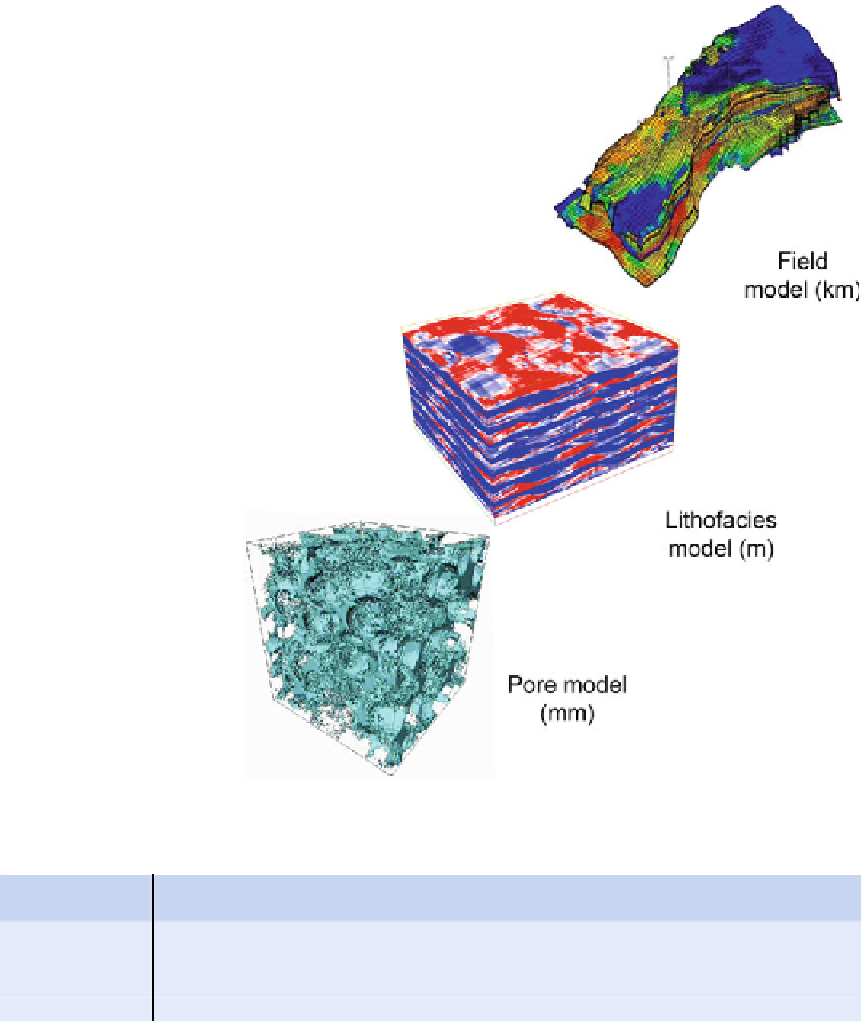Geoscience Reference
In-Depth Information
Fig. 4.3
Reservoir models
at different scales (Statoil
image archives,
#
Statoil
ASA, reproduced with
permission)
Table 4.1
Typical dimensions for important volumes used in multi-scale reservoir modelling
Fraction of reservoir
volume
Volume (m
3
)
X (m)
Y(m)
Z(m)
Cubic root (m)
10
5
10
5
10
5
10
13
Pore-scale model
5
50
50
1.25
0.00005
0.00000005
Core plug sample
0.025
0.025
0.025
0.000031
0.031
0.00003
Well test volume
400
300
10
1,200,000
106
0.1
Reservoir model
8,000
4,000
40
1,280,000,000
1,086
1
For a fuller treatment of multi-phase flow
theory applied to oil and gas reservoir systems
refer to reservoir engineering textbooks (e.g.
Chierici
1994
; Dake
2001
; Towler
2002
).
A more geologically-based introduction to
multi-phase flow in structured sedimentary
media is given by Ringrose et al. (
1993
) and
Ringrose and Corbett (
1994
).
The first essential concept in multiphase flow
is the principal of mass balance. Any fluid which
flows into a grid cell (mass accumulation) over a
particular interval of time must be equal to the
mass of fluids which have flowed out. This prin-
ciple may be rather trivial for single phase flow,
but becomes more critical for multiphase flow,
where different fluids may have different











